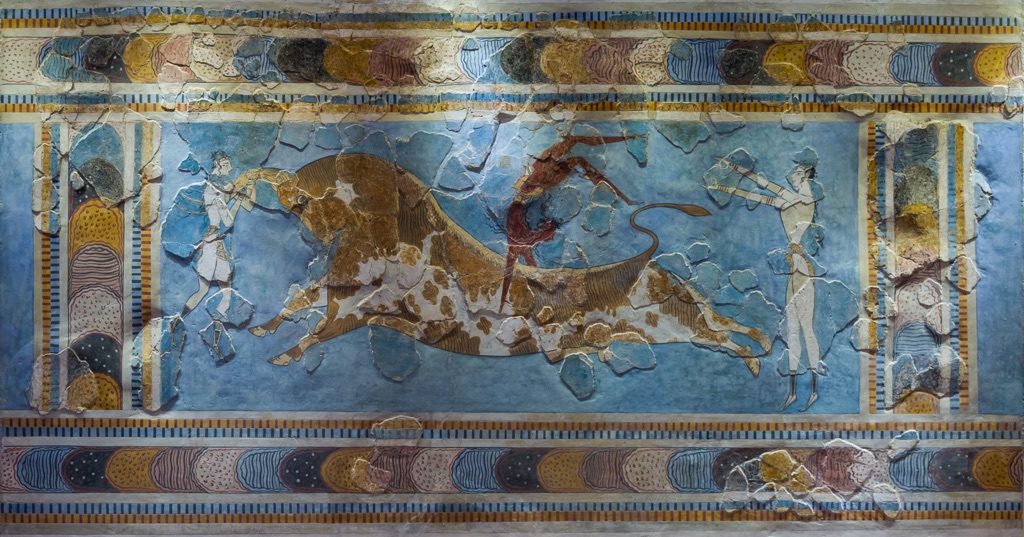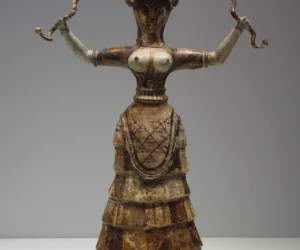The Minoan Snake Goddess Figurines: A Closer Look In 1903, archaeologist Arthur Evans uncovered two remarkable figurines at the Minoan palace in Knossos, Crete. These faience figures have since sparked intrigue and debate among scholars. Evans dubbed the larger figurine a “Snake Goddess” and the smaller one a “Snake Priestess.” But over time, experts have…
The Minoans
History and Timeline
The Minoans, an ancient civilization that flourished on the island of Crete from approximately 2600 to 1100 BCE, are considered Europe’s first advanced society. The Minoan civilization is divided into three main eras: Early Minoan (EM), Middle Minoan (MM), and Late Minoan (LM). The peak of their civilization, often referred to as the Minoan Golden Age, occurred during the MM period, particularly from 2000 to 1600 BCE, when the palaces at Knossos, Phaistos, Malia, and Zakros were built. The decline of the Minoans began around 1450 BCE, possibly due to natural disasters like earthquakes and volcanic eruptions, or invasions by the Mycenaeans from mainland Greece. By 1100 BCE, the Minoan civilization had faded into history, leaving behind a legacy that influenced the Mycenaean and later Greek cultures.
The achievements of the Minoans were remarkable, especially in the fields of architecture, art, and maritime trade. They constructed elaborate palaces, such as the famous Knossos, which were centers of political, religious, and economic activity. These palaces featured advanced architectural techniques, including multi-story buildings, light wells, and sophisticated plumbing systems. The Minoans were also skilled sailors and traders, establishing networks throughout the Mediterranean, which facilitated the exchange of goods like olive oil, wine, and saffron, and the spread of their cultural influences. Their writing systems, Linear A and Linear B, though the former remains undeciphered, were significant achievements in the development of written language.
War and Military
The Minoans are often characterized as a peaceful society, with less emphasis on military might compared to their contemporaries. Evidence for this characterization is primarily based on the lack of fortifications around their cities and palaces, suggesting a society that did not engage regularly in warfare. However, this view has been challenged by some scholars who argue that the Minoans may have had defensive capabilities and military structures that have not survived or been discovered. Artifacts such as swords, shields, and helmets have been found, indicating that the Minoans were capable of warfare when necessary.
Despite the peaceful image, there is evidence to suggest that the Minoans experienced conflicts, both internal and with neighboring civilizations. Frescoes and pottery depict scenes of Minoans bearing arms, and their strategic position in the Mediterranean would have necessitated some form of military engagement, particularly in protecting their trade routes. The eventual decline of the Minoan civilization, partly due to the Mycenaean invasion, underscores the presence of military threats. The exact nature and extent of Minoan military capabilities remain a subject of academic debate, reflecting the complexity of understanding a civilization that left no written records about their military practices.
Society and Religion
Minoan society was highly advanced and is believed to have been matriarchal, with significant evidence pointing towards the worship of a Great Goddess, reflecting a matrifocal culture. This deity was often depicted in art as a figure of authority and fertility, surrounded by symbols of nature and animals. Priestesses played a crucial role in religious ceremonies, which were closely tied to agricultural cycles and the worship of ancestors. The society was hierarchical, with the king or “wanax” at the top, followed by priests, artisans, and farmers. This social structure was supported by a complex economy based on agriculture, trade, and craft production.
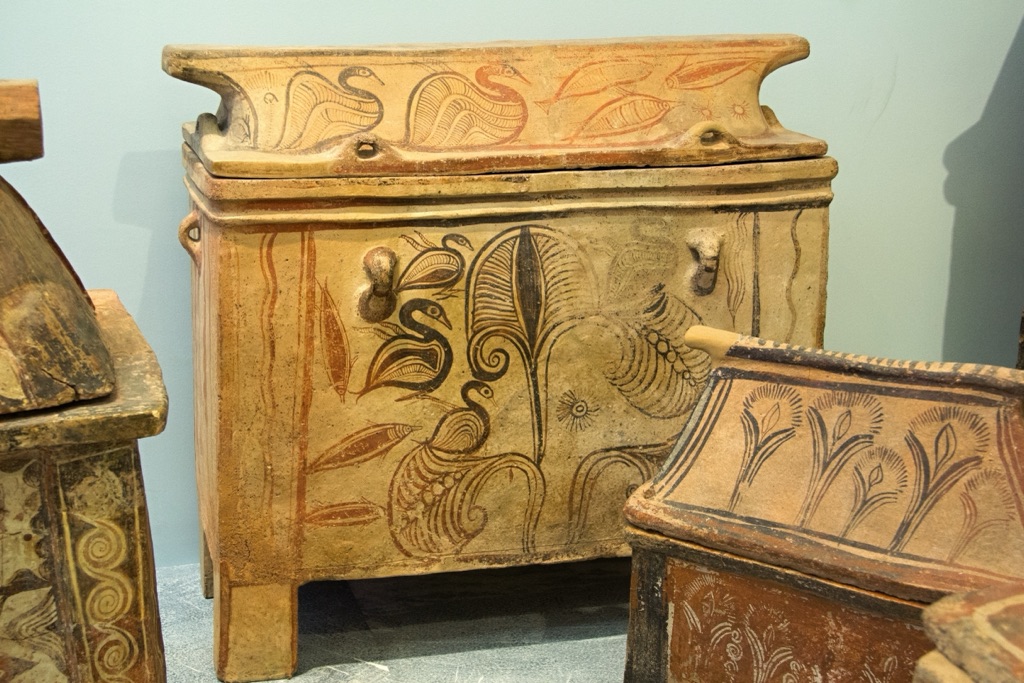
Religion permeated every aspect of Minoan life, with numerous sacred sites, including peak sanctuaries, cave shrines, and palatial complexes, serving as centers for worship. Ritual activities often involved offerings, sacrifices, and communal feasting, as depicted in frescoes and artifacts. The Minoans also held a strong belief in the afterlife, as evidenced by their elaborate burial practices and the goods placed in tombs for use in the next world. The convergence of religion and society in Minoan Crete fostered a culture that celebrated nature, fertility, and the divine, leaving a lasting imprint on subsequent Greek religious practices.
Art and Culture
Minoan art and culture were characterized by a love for nature, movement, and vivid colors, as seen in their frescoes, pottery, and sculptures. The frescoes adorned the walls of palaces and public buildings, depicting scenes from daily life, religious rituals, and nature, showcasing the Minoans’ advanced artistic skills and their appreciation for the natural world. Minoan pottery, known for its fine craftsmanship and intricate designs, was a significant aspect of their material culture, used both for daily functions and ceremonial purposes. The Minoans also excelled in metalwork and jewelry making, creating intricate designs with gold, silver, and bronze.
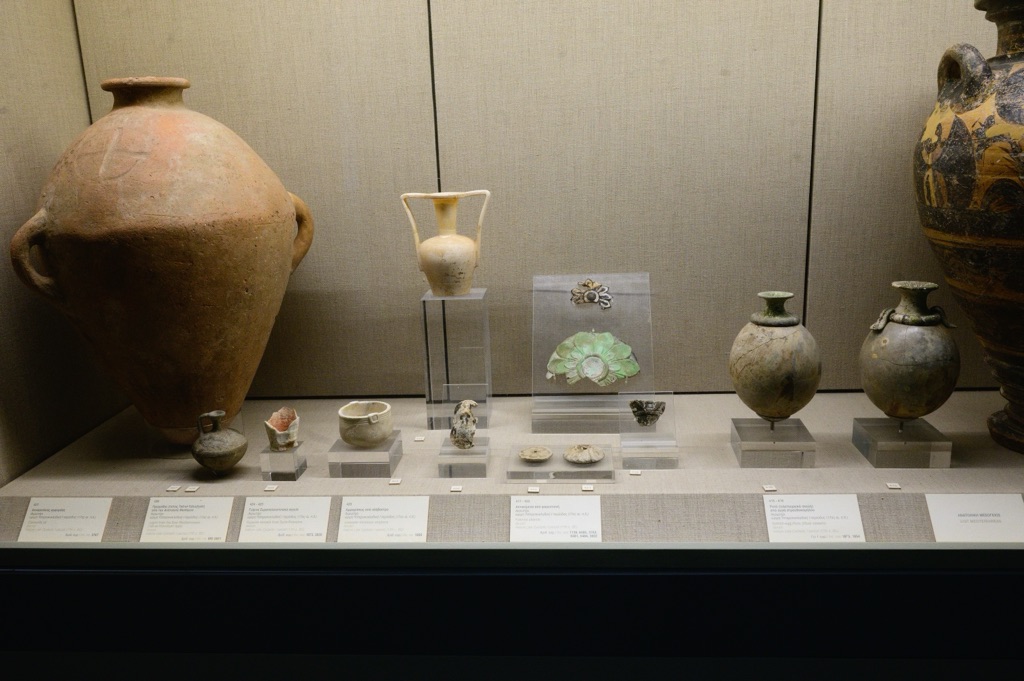
The cultural achievements of the Minoans extended beyond the visual arts to include advances in writing, with the development of Linear A and Linear B scripts. Although Linear A remains undeciphered, Linear B was used by the Mycenaeans to write an early form of Greek, indicating the influence of Minoan culture on the Greek mainland. Music and dance were important aspects of Minoan culture, as evidenced by depictions of musicians and dancers in their art. These cultural expressions not only highlight the artistic prowess of the Minoans but also provide insights into their social and religious practices, revealing a civilization that celebrated life, nature, and the divine.
Inventions
The Minoans were remarkable innovators, contributing several important inventions to the ancient world. One of their most significant contributions was the development of an advanced plumbing and drainage system, including flush toilets and aqueducts, which were used in the palaces and possibly in urban settlements. This system highlights the Minoans’ understanding of engineering and sanitation, far ahead of their time. Another notable invention was the use of pithoi, large storage jars, which were crucial for managing their agricultural surplus and trade goods. These jars facilitated the storage and transport of goods like olive oil, wine, and grains, playing a vital role in the Minoan economy.
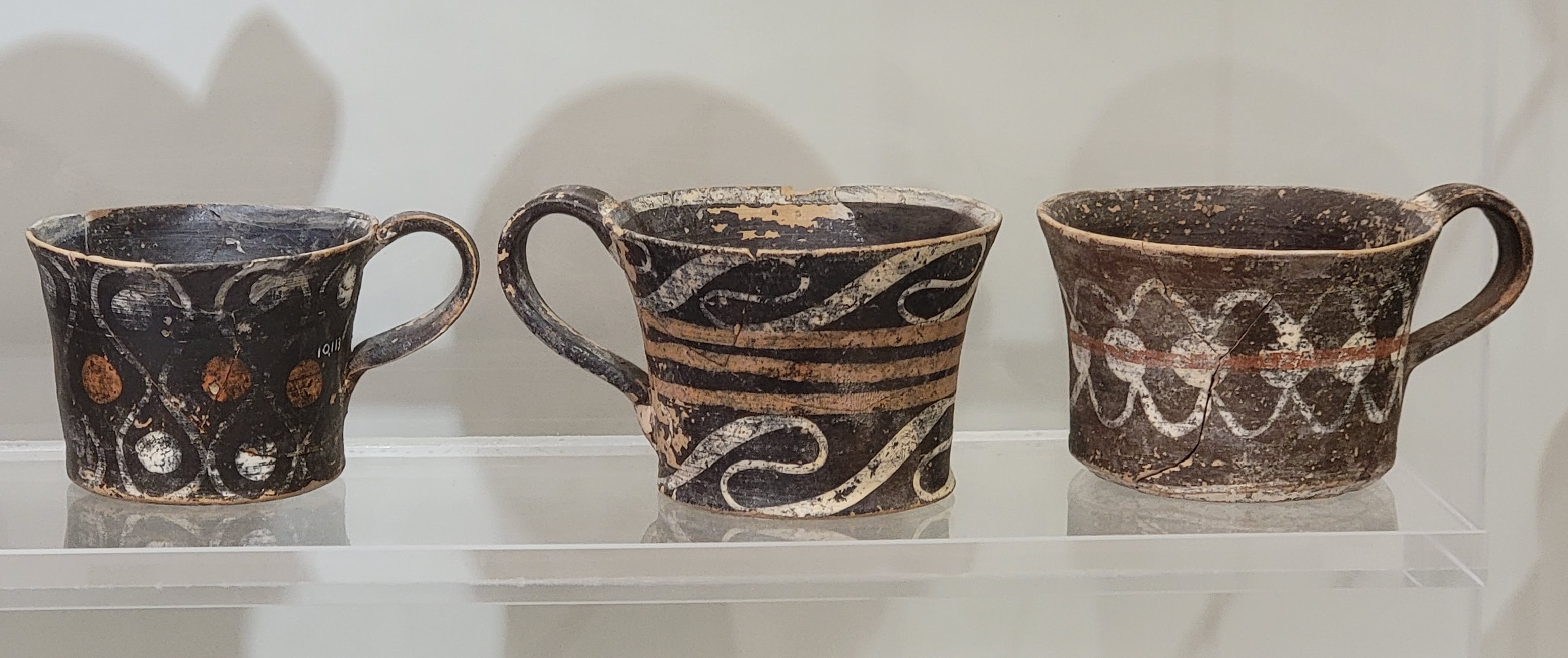
In addition to their architectural and engineering feats, the Minoans also made advances in shipbuilding and navigation, enabling them to become a dominant maritime power in the ancient Mediterranean. Their ships, designed for long-distance trade, helped to establish Crete as a major trading hub. The Minoans’ contributions to writing, with the creation of Linear A and the adoption of Linear B, were also significant inventions, laying the groundwork for written communication in the Aegean region. These inventions, among others, underscore the Minoans’ role as innovators and their lasting impact on subsequent civilizations in the Mediterranean and beyond.
Minoan Archaeological Places and Historical Artifacts
FAQ’s about the Minoans
Who Were the Minoans?
The Minoans were an ancient civilization that flourished on the island of Crete from approximately 2600 to 1100 BCE. They are considered Europe’s first advanced civilization, known for their sophisticated society, complex architecture, and vibrant art. The Minoans are named after the mythical King Minos, associated with the labyrinth and the Minotaur legend, although the civilization’s actual name, as referred to by its people, remains unknown.
Where Were the Minoans Located?
The Minoans were primarily located on Crete, the largest island in Greece, situated in the Aegean Sea. Their civilization centered around various palace complexes, the most famous being Knossos, Phaistos, Malia, and Zakros. These palaces served as political, religious, and economic hubs. Crete’s strategic location between Egypt, the Near East, and mainland Greece facilitated the Minoans’ development into a significant maritime trading power.
What Was the Most Distinguishing Factor of the Minoans?
The most distinguishing factor of the Minoans was their advanced architectural and artistic achievements. They are renowned for their elaborate palaces, which featured complex layouts, sophisticated plumbing systems, and vibrant frescoes depicting religious rituals, nature, and everyday life. Minoan art is characterized by its naturalistic style and vivid colors, setting it apart from the more stylized art of contemporary civilizations.
How Did the Minoans Develop Wealth?
The Minoans developed wealth primarily through trade and maritime commerce. Their strategic location enabled them to become intermediaries in the trade of goods such as olive oil, wine, and saffron between Egypt, the Near East, and mainland Greece. The Minoans also exploited the natural resources of Crete, including copper, which was a valuable commodity in the Bronze Age. Their economic prosperity is reflected in the opulence of their palaces and the quality of their art and craftsmanship.
What Did Minoans Look Like?
Artistic depictions, primarily frescoes and pottery, provide the best evidence of the Minoans’ appearance. These images suggest that Minoans valued physical beauty, depicting men and women with slim waists, long hair, and elaborate clothing. Men are often shown with dark hair and bare chests, wearing loincloths or kilts, while women are depicted with long, flowing hair, wearing fitted dresses with exposed breasts. Both genders are shown with fair skin in art, although this may not be an accurate representation of their actual skin tone.
Where Did the Minoans Come From?
The origins of the Minoan civilization are a subject of ongoing research and debate among historians and archaeologists. Genetic studies suggest that the Minoans had deep roots in the Aegean and were closely related to other prehistoric populations in the region. There is evidence to suggest a significant degree of continuity between the Neolithic (Stone Age) inhabitants of Crete and the later Minoan civilization. However, there was also likely some level of migration and cultural exchange with other ancient civilizations in the Near East and Egypt, contributing to the development of Minoan society.
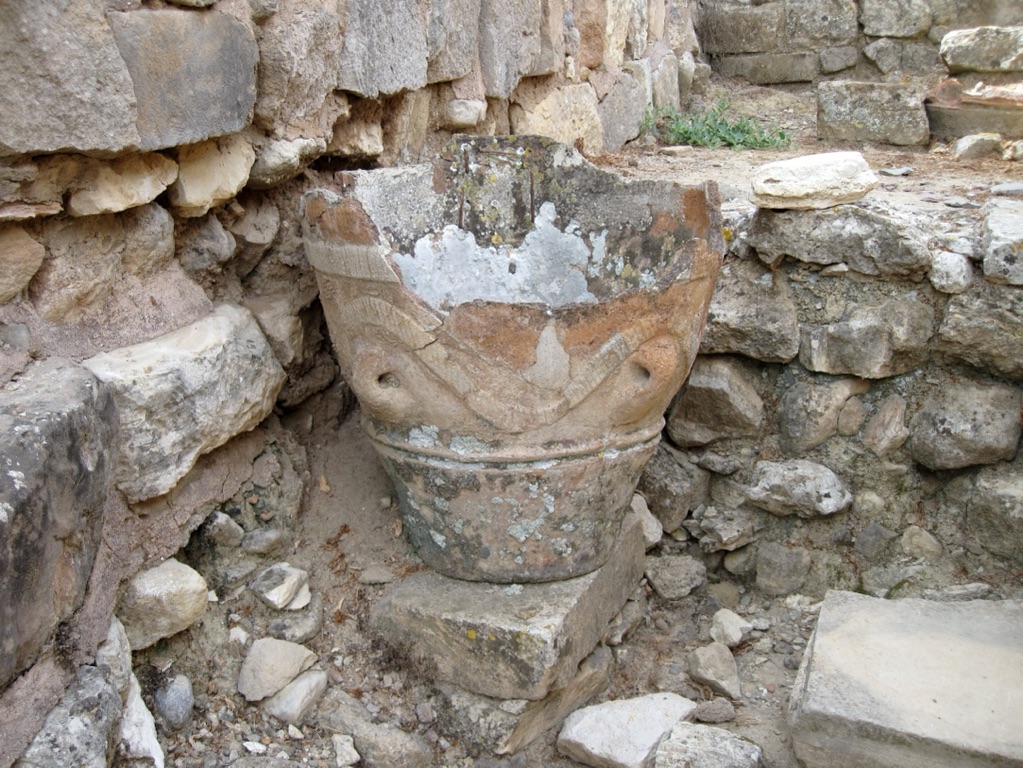
Archaeological site of Agia Triada
The Archaeological site of Agia Triada, also known as Ayia Triada, is a significant Minoan settlement located on the island of Crete, Greece. This site has provided a wealth of artifacts and structures that offer insights into the Minoan civilization. Discovered at the turn of the 20th century, Agia Triada has been a focal point for understanding the Minoan’s complex social, economic, and religious practices. The site’s name, which means “Holy Trinity,” is a modern appellation reflecting the nearby village and Byzantine church.
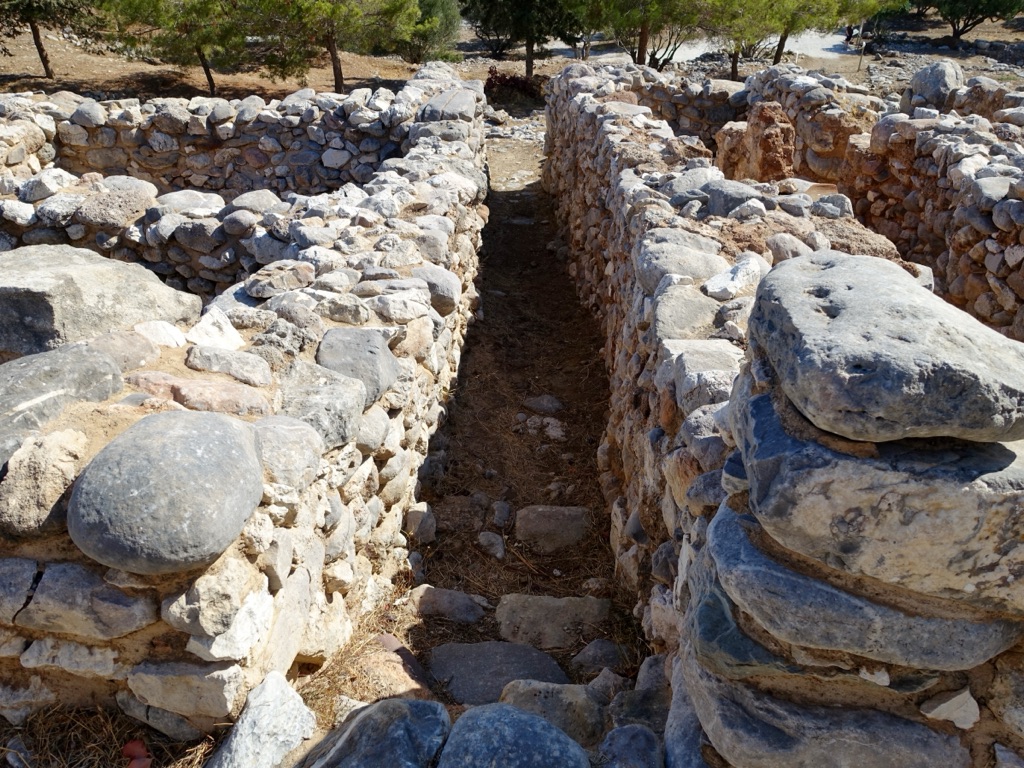
Archaeological Site of Gournia
The Archaeological Site of Gournia is a testament to the Minoan civilization that flourished on Crete. This well-preserved town offers a glimpse into the Bronze Age, showcasing urban planning, architecture, and artifacts from around 1550 to 1450 BC. Gournia’s discovery has provided invaluable insights into Minoan society, economy, and daily life.
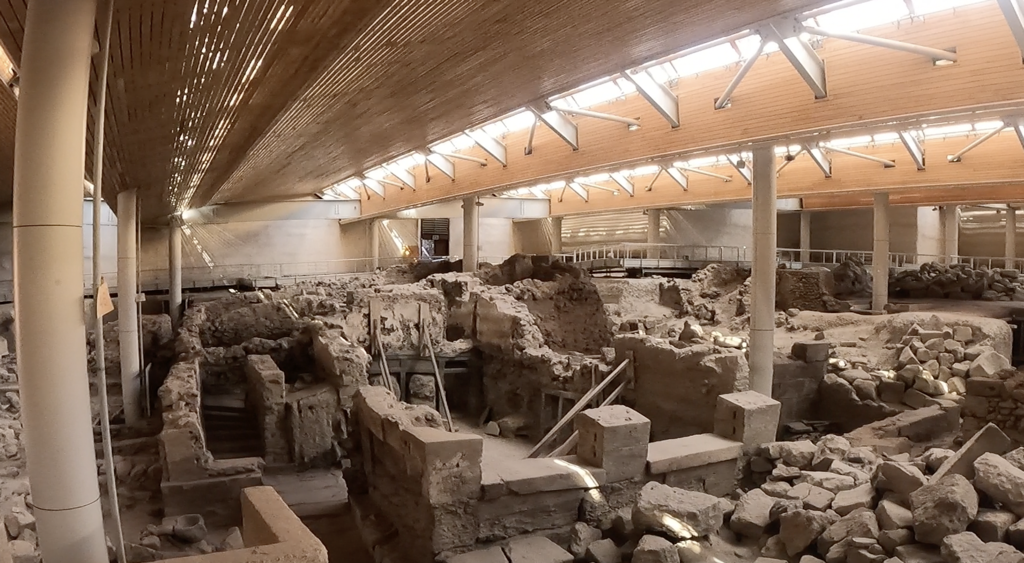
Akrotiri
Akrotiri is a Minoan Bronze Age settlement on the volcanic Greek island of Santorini (Thera). Buried under volcanic ash from a massive eruption around 1627 BCE, the site is remarkably well-preserved. Its buildings, frescoes, and artifacts provide a snapshot of Aegean life in the second millennium BCE. Akrotiri is often compared to Pompeii due to its state of preservation and the insights it offers into the ancient world.
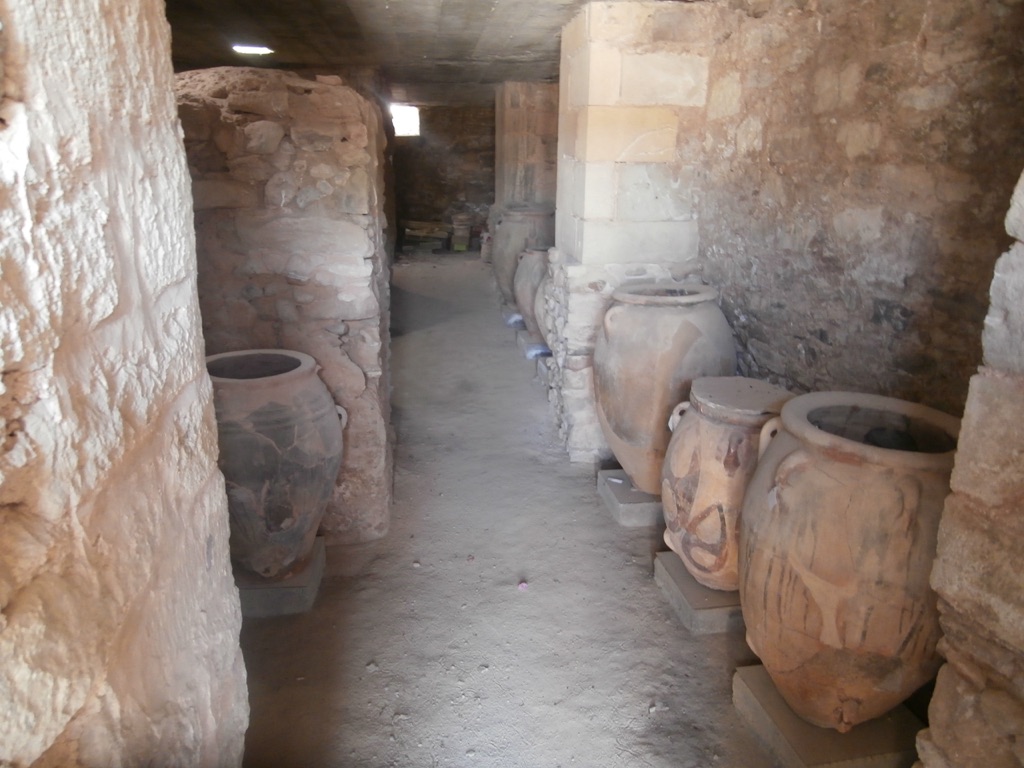
Ancient Phaistos
Ancient Phaistos, located on the island of Crete, is a significant archaeological site that was once a flourishing Minoan city. It’s renowned for its palace, which is a classic example of Minoan architecture. The site provides valuable insights into the Minoan civilization, which was one of the earliest in Europe. The discovery of the Phaistos Disc, a clay disc inscribed with a mysterious code, has intrigued scholars and visitors alike. This ancient city, with its rich history and enigmatic artifacts, continues to be a focal point for archaeological study and cultural fascination.
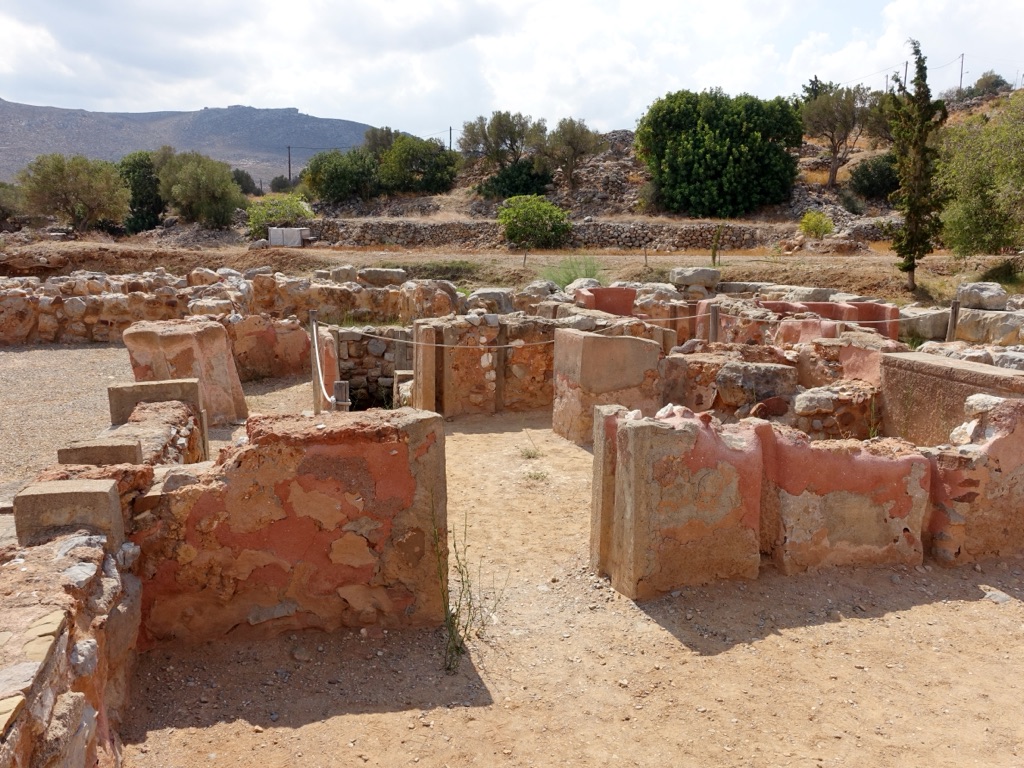
Palace of Zakros
The Palace of Zakros is a significant Minoan archaeological site on the eastern coast of Crete, Greece. It’s the fourth largest of the Minoan palaces and is considered a primary center of Minoan civilization. This palace complex is unique due to its location and the fact that it was found with many of its contents intact, providing valuable insights into Minoan culture. The Palace of Zakros was a hub for trade and religious activities, and its ruins suggest a sophisticated society with advanced architectural skills.

